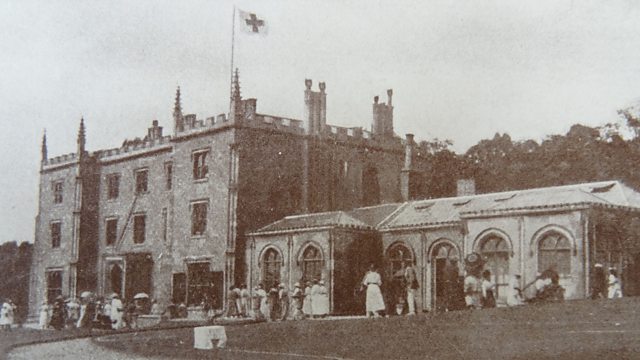Abbey Manor, Evesham: Where Every Injured Survived
The makeshift war hospital successfully treated all 3,600 injured soldiers
Abbey Manor, Evesham, was one of the first grand houses across Britain to open as a voluntary aid detachment (VAD) hospital during the war.
The family home of the formidable Florence Rudge and her son, the house had long been used as a venue for local fundraising and charitable events. One of these was the creation of a Voluntary Auxiliary Detachment of the Worcestershire branch of the Red Cross Society in the late 19th Century and Abbey Manor was used to host first aid and nursing classes for the local men and women. After the death of her husband Edward in 1909, Florence continued the family's business, political and charitable work across Evesham and she was repeatedly praised for her energy, organisational skills and sense of duty.
By 1913, Florence had already begun to plan for the possible conflict. She started preparing the house and her local band of volunteers and on 28 July 1914, she started the conversion of Abbey Manor into a hospital. By 10 August the first orders were given for furniture and equipment to be installed and by 24 September the Abbey Manor Voluntary Auxiliary Hospital had 25 beds ready to receive patients. Mrs Florence Rudge was confirmed as the hospital commandant.
For the first few months Mrs Rudge met all of the costs herself but eventually the War Office made an allowance of 2 shillings per patient per day rising to 3 shillings and three pence by the end of the war.
The first 18 soldiers arrived at Abbey Manor on 24 May 1915 and were all discharged within a month. The second group of 17 men were more seriously wounded and came from a diverse range of regiments and included soldiers from New Zealand and India.
As the war continued, rooms in the house were made into surgical wards and the grand Inner Hall became an extra medical ward with the house now containing 50 beds. By 1916, Abbey Manor was accommodating 100 patients at a time so extra wards were created in the Palm House and accommodation and catering tents were put up across the gardens and grounds. A fully equipped operating theatre and dressings ward was built in the conservatory.
Florence herself found happiness during the war. In January 1916, she married 2nd Lieutenant Leonard Haynes of nearby Badsey. He changed his name by deed poll to Haynes-Rudge two weeks before the wedding.
By the Spring of 1918 the need for beds was so great that Florence Rudge took on the tenancy of the nearby Chadbury House and converted it into an annexe to Abbey Manor containing an extra 45 beds. Throughout 1918, all 145 beds in Evesham were fully occupied and Abbey Manor Hospital continued to treat and receive patients until 22 May 1919.
During its time as a hospital, Abbey Manor had not closed for a single day and had received 3,612 soldiers from every part of the Commonwealth and the United States. Remarkably, not one single death occurred at the hospital.
Florence Haynes- Rudge was made Commander of the Order of The British Empire (CBE) and was decorated by the King at Buckingham Palace in March 1919. Florence died in 1934 and was interred in the Rudge family vault under the east window of St Laurence Church in Evesham.
Location: Abbey Manor, Evesham WR11 4TB
Image: Abbey Manor in 1914, courtesy of the Rudge Family and Barrie Baldelli.
Duration:
This clip is from
Featured in...
![]()
Βι¶ΉΤΌΕΔ Hereford & Worcester—World War One At Βι¶ΉΤΌΕΔ
Places around Hereford & Worcester that tell a story of World War One
![]()
Medicine—World War One At Βι¶ΉΤΌΕΔ
Hospitals, medical pioneers and the nursing contribution
More clips from World War One At Βι¶ΉΤΌΕΔ
-
![]()
The loss of HMY Iolaire
Duration: 18:52
-
![]()
Scotland, Slamannan and the Argylls
Duration: 07:55
-
![]()
Scotland Museum of Edinburgh mourning dress
Duration: 06:17
-
![]()
Scotland Montrose 'GI Brides'
Duration: 06:41







